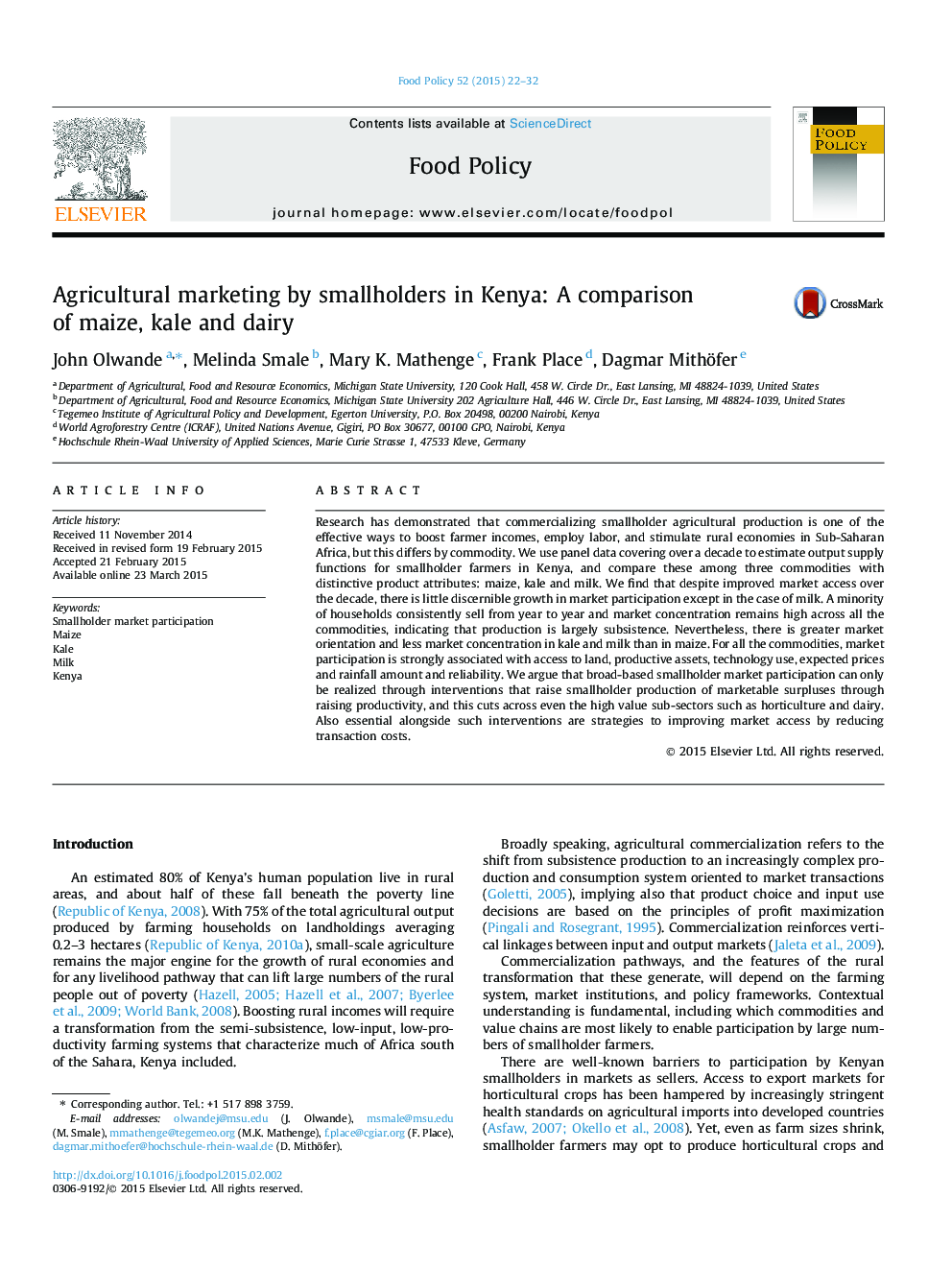| Article ID | Journal | Published Year | Pages | File Type |
|---|---|---|---|---|
| 5070372 | Food Policy | 2015 | 11 Pages |
Abstract
Research has demonstrated that commercializing smallholder agricultural production is one of the effective ways to boost farmer incomes, employ labor, and stimulate rural economies in Sub-Saharan Africa, but this differs by commodity. We use panel data covering over a decade to estimate output supply functions for smallholder farmers in Kenya, and compare these among three commodities with distinctive product attributes: maize, kale and milk. We find that despite improved market access over the decade, there is little discernible growth in market participation except in the case of milk. A minority of households consistently sell from year to year and market concentration remains high across all the commodities, indicating that production is largely subsistence. Nevertheless, there is greater market orientation and less market concentration in kale and milk than in maize. For all the commodities, market participation is strongly associated with access to land, productive assets, technology use, expected prices and rainfall amount and reliability. We argue that broad-based smallholder market participation can only be realized through interventions that raise smallholder production of marketable surpluses through raising productivity, and this cuts across even the high value sub-sectors such as horticulture and dairy. Also essential alongside such interventions are strategies to improving market access by reducing transaction costs.
Related Topics
Life Sciences
Agricultural and Biological Sciences
Food Science
Authors
John Olwande, Melinda Smale, Mary K. Mathenge, Frank Place, Dagmar Mithöfer,
